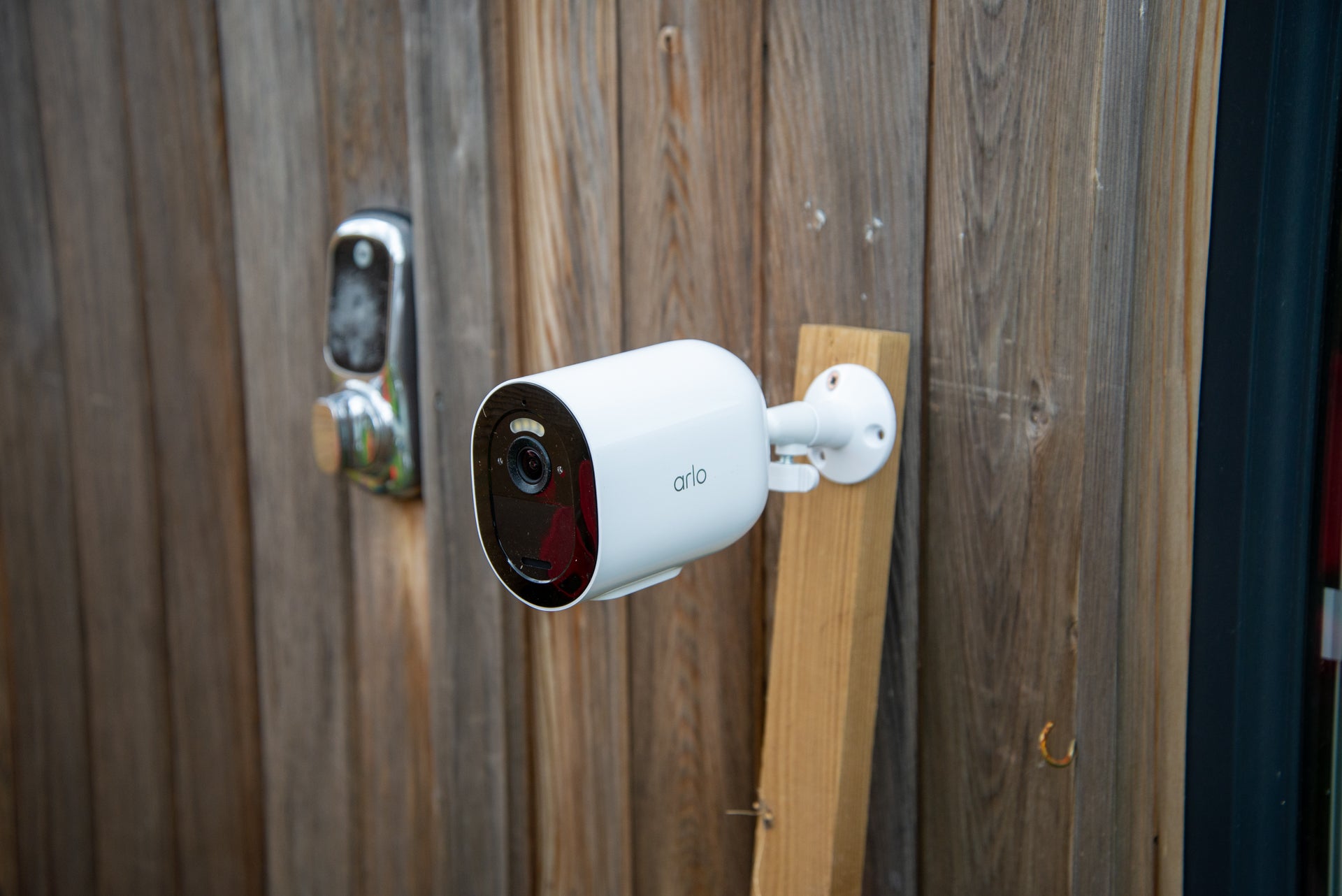An improvement over the original, the Arlo Go 2 works over Wi-Fi or 4G, seamlessly swapping between the two. Its Full HD resolution is an upgrade over the original, although lower than most of the Arlo range. This model is expensive, but if you need security camera coverage where there’s no Wi-Fi, then this is the best option. Most people will find the Arlo Pro 4 a better choice.
Pros
- Wi-Fi and cellular
- Excellent mode control
- SD card backup
- Powerful activity zones and AI detection
Cons
- Expensive
- Can’t view SD card remotely
Introduction
Thanks to its SIM card slot, the Arlo Go camera was able to record and operate in areas that other security cameras couldn’t, but it had one issue: it was a cellular-only product, and therefore it wasn’t particularly flexible. The Arlo Go 2 aims to fix that, with the option of Wi-Fi and cellular connections, seamlessly able to switch between the two. This makes it a great option in those instances where flexibility is required. It’s a little expensive and quite a niche product – but if you need an adaptable bit of kit, there’s nothing better.
Design and Installation
- SIM and microSD card slots
- Screw-mount only
- Connects to 4G networks and Wi-Fi
For the Arlo Go 2, the company has opted for a design that looks and feels much like other cameras in the range, such as the Arlo Pro 4. It’s a touch longer than most models, bar the Arlo Floodlight, since it holds a larger battery in the back. Interestingly, Arlo has rolled out this larger case for the longer battery-life editions of the Pro 4 and Ultra 2: the Pro 4 XL and Ultra 2 XL.
Due to the size of the Go 2, there’s no option for a magnetic mount. Instead, you get a screw mount to which you can attach the provided wall/ceiling mount.
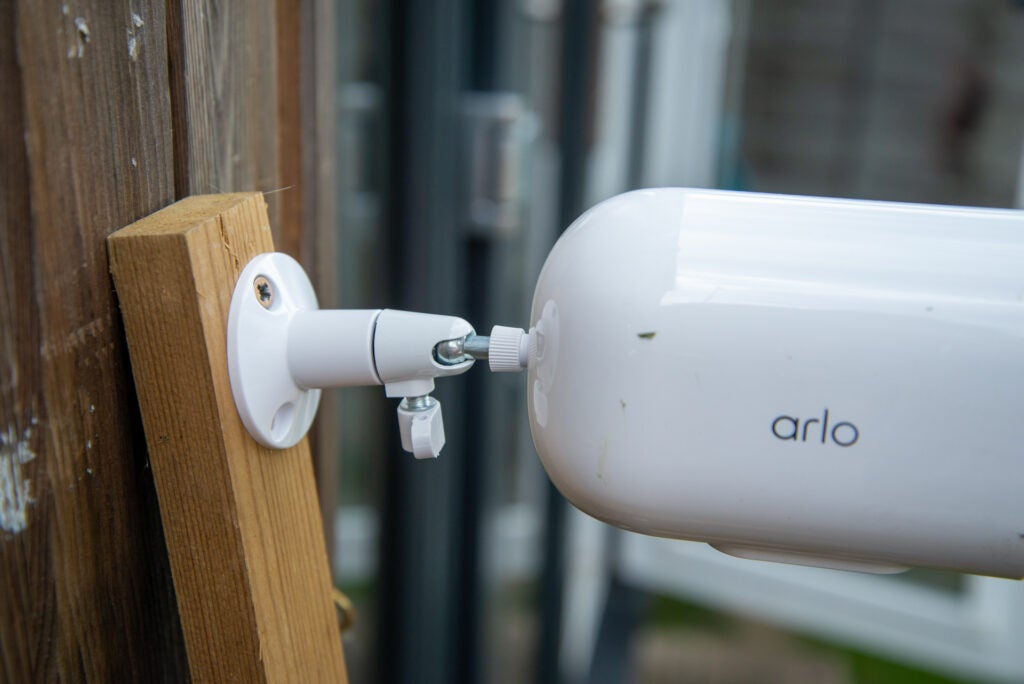
The camera can be charged using the standard magnetic connector located on the bottom of the unit, which is also used for ****ATTACHING???***solar panels, and there’s also a button beneath that, when pressed, allows you to slide out the camera and battery for charging.
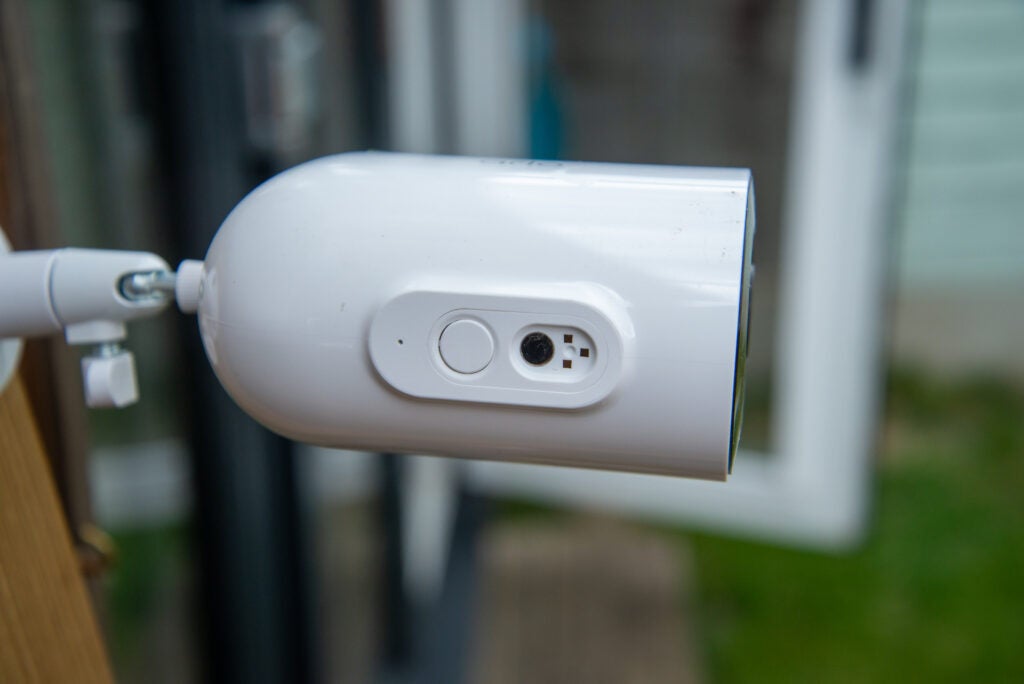
If you already have a dedicated Arlo battery charger, then you can use this to top up the battery, switching it out for an already-charged unit. This trick ***WHAT TRICK? DO YOU MEAN THE REMOVAL OF THE BATTERY AND CAMERA???*** also provides access to two slots inside the camera: the microSD card slot for offline video backups, and the SIM card slot for connection to a cellular network.
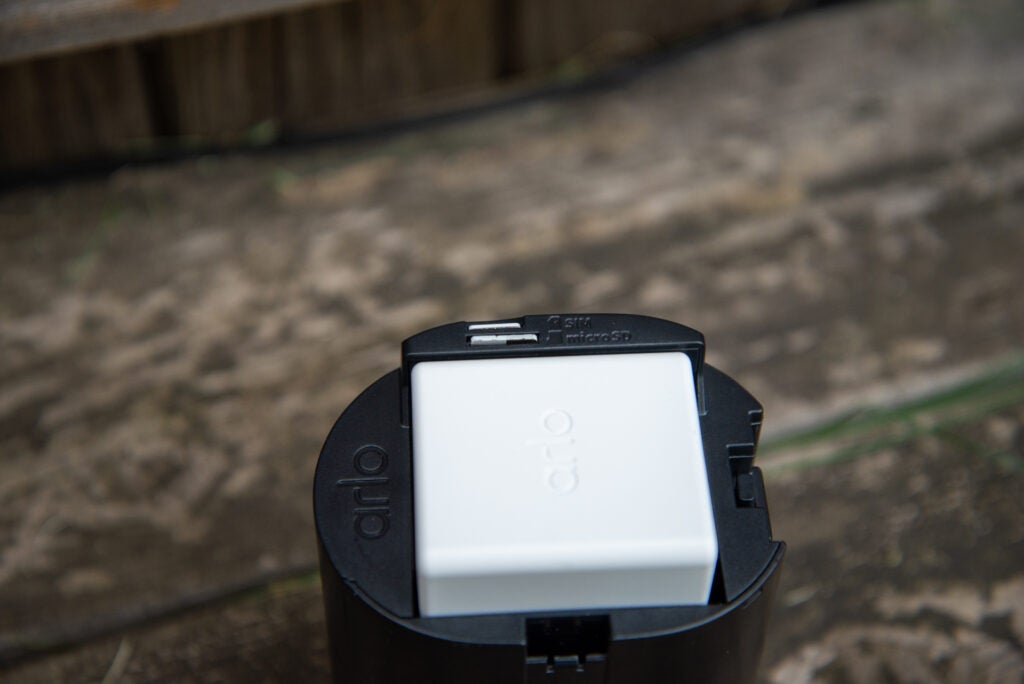
Not that this camera requires a cellular connection; it can connect to a standard Wi-Fi network instead. By default, the Wi-Fi network is the preference, with cellular taking over in those instances there isn’t a wireless connection.
That’s useful for watching over items such as a motorhome, for example: when it’s parked at home, the camera will use Wi-Fi; when you take it out, the camera protects using its cellular connection.
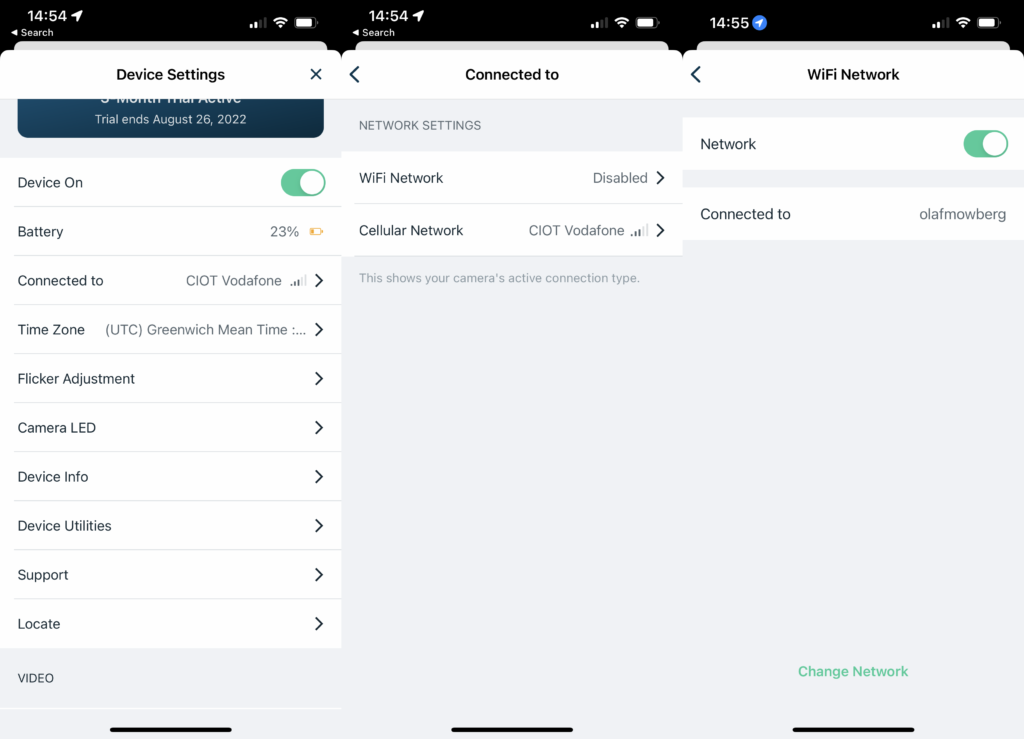
The connection to the Arlo app is simple. Just by following the wizard, I had my camera up and connected within 10 minutes.
Features
- Offline backups can’t be accessed remotely
- Excellent detection options
- Clever mode options
Once connected to the Arlo app, the Arlo Go 2 looks, acts and operates just like any other camera from the range. Tap the thumbnail image to dive into the Live view, where you can turn on two-way talk to have a conversation with anyone you can see. There’s also a siren you can activate: I found this loud enough to attract attention, but not as loud as a home alarm.
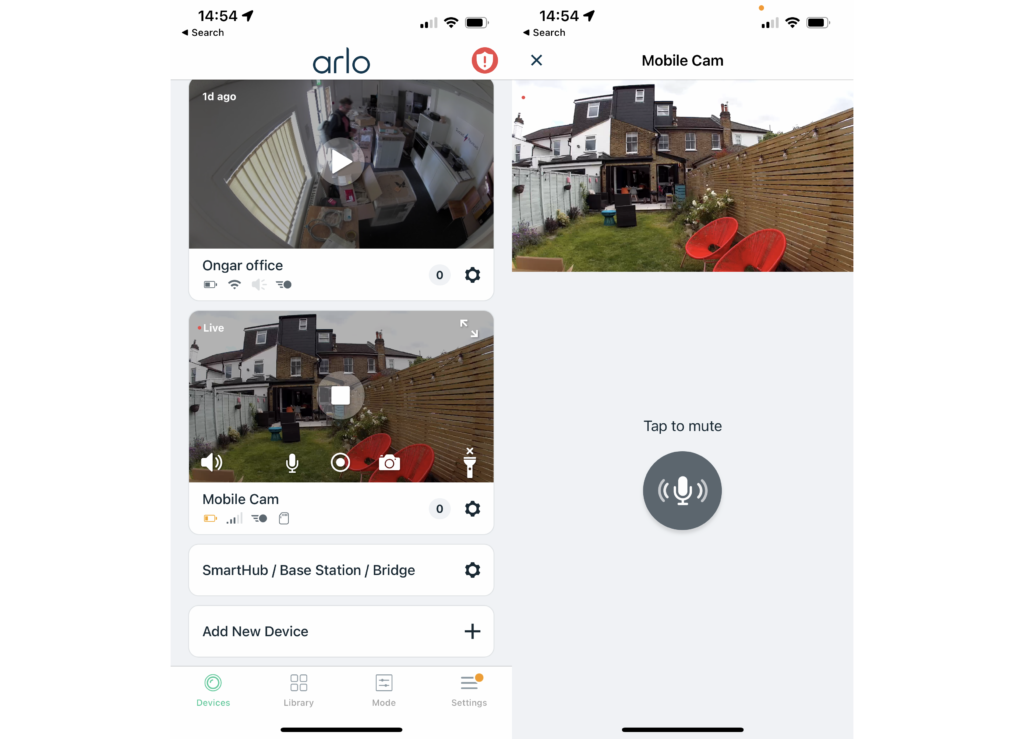
To get the camera to do more than simply warn you of motion, it’s worth having an Arlo Secure subscription. Prices start at £2.99 for a single camera with 30 days of activity history in the cloud; if you want infinite cameras covered, it’s £8.99 a month. That’s a little more expensive than the similar packages for Ring and Nest.
These plans top out at a recording resolution of 2K, which is fine for the Arlo Go 2. If you have a 4K camera, then you’ll need Arlo Secure Plus, which offers a multi-camera plan for a whopping £12.99 a month.
Arlo Secure is about more than just cloud storage, however; it also delivers additional features. Activity Zones are a key feature, letting you select which parts of the image you want to monitor for motion. My only word of warning is that if you move the Arlo Go 2, you’ll need to remember to redraw the Activity Zones for the new location.
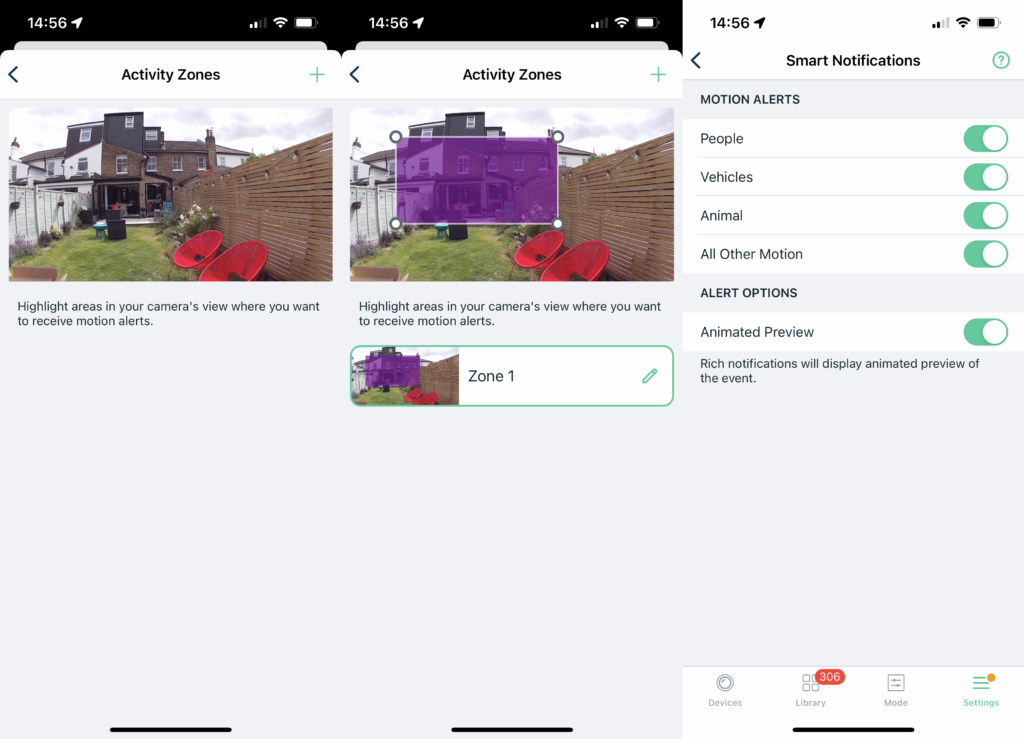
Arlo Secure also introduces people, vehicle and animal detection, with the option to turn on notifications for your selection of detection type. Typically, I leave people and animal detection on (the latter, for my cats), but don’t bother with vehicle detection.
All video recorded to the cloud is available in the excellent Library section of the app. This highlights all video from all cameras, but it’s easy to filter by device, date and detection type (people, animals and vehicles) to quickly find the clip you want. Any clips can be downloaded to a phone.
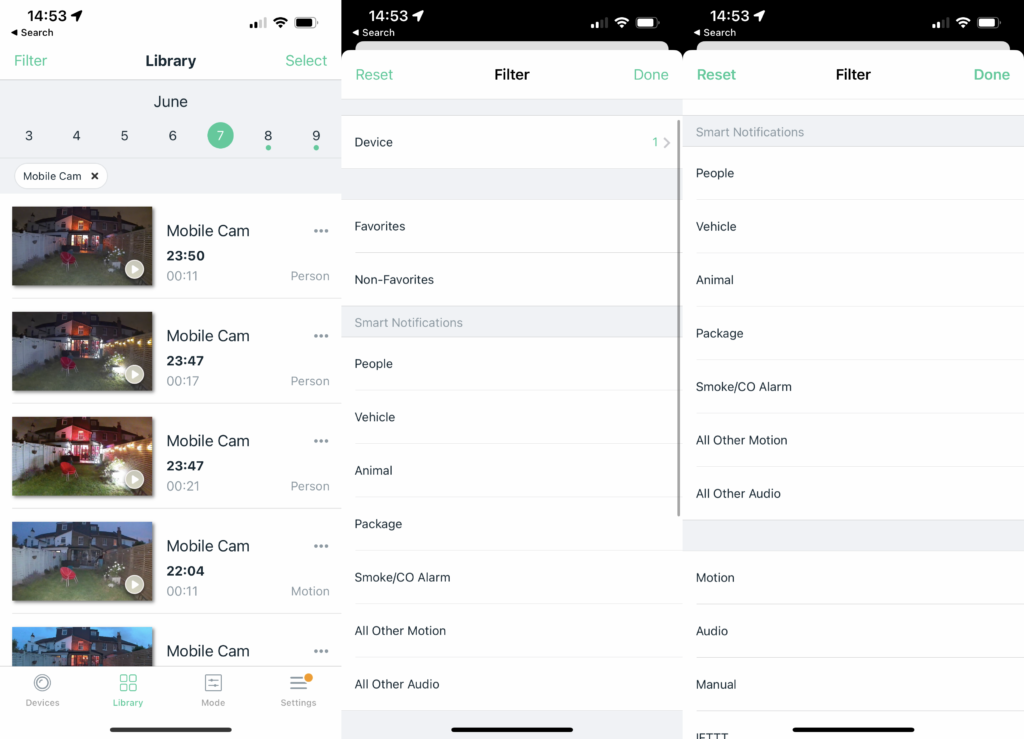
Given that 4G connections may not be the most reliable, the Arlo Go 2 also offers the ability to record to a microSD card. This is welcome, and means that footage won’t be missed in those instances there’s no internet connection. However, there’s no way to remote view footage stored on an SD card. Instead, you have to retrieve the camera, open it up and insert the memory card into a computer.
The combination of the two is hugely powerful. Set up correctly, the Arlo Go 2 proved to be reliable and powerful, delivering only those notifications from the detection type I had stipulated.
What’s particularly impressive about Arlo cameras is their mode settings, which let you choose when they can and can’t record. Modes can be activated manually (on and off); but there are automatic options, too, including geofencing and scheduling, where you set the mode based on the time of day.
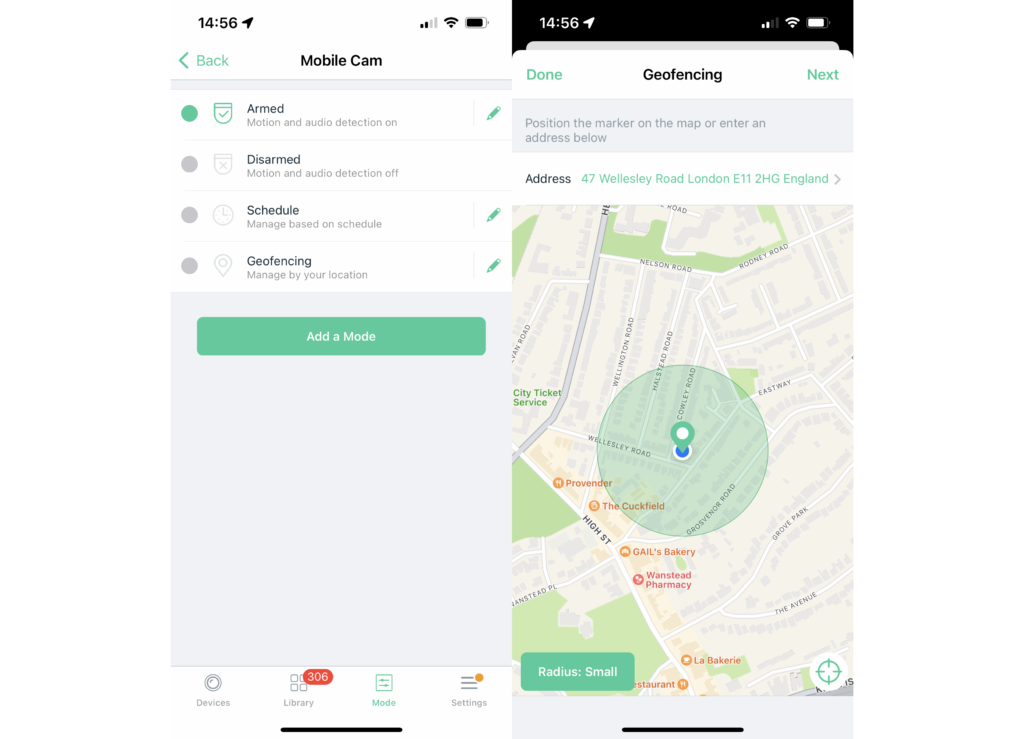
Again, be careful when using geofencing: if the Arlo Go 2 moves, you’ll need to reset its location in the app to the new area, or you may find some unexpected results.
Cleverly, geofencing can be used with scheduling. When you go out, the Arlo Go 2 turns on. When you return home, the camera reverts back to its schedule.
If that isn’t flexible enough, the camera’s main modes can be selected automatically using IFTTT – say, turning the camera on when your smart alarm (Boundary) turns on.
Video Quality
- 1080p resolution only
- Sharp in the day
- Full-colour night footage
Thanks to a 130-degree field of view, the Arlo Go 2 captures footage across a decent area inside or out. It’s a product of compromise, though. While Arlo’s more recent cameras offer a 2K resolution or higher, the Arlo Go 2 has a 1080p resolution.
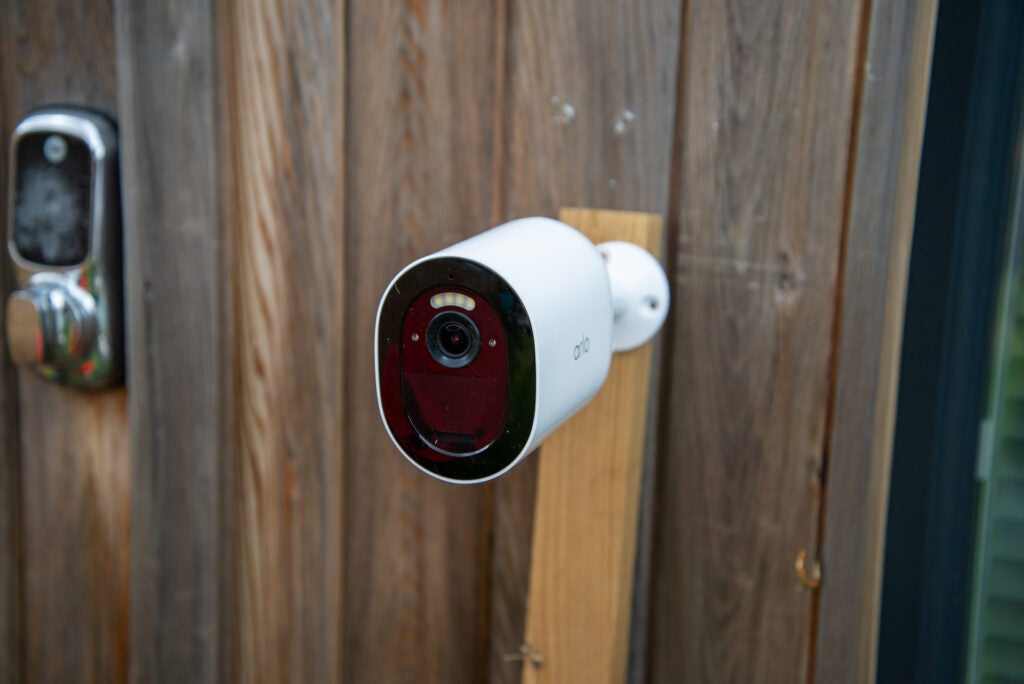
Admittedly, this is a step up from the 720p resolution of the original. Nevertheless, this camera falls a little way behind much of the competition. That said, the lower resolution does mean that the camera is more likely to deliver footage over 4G without breaking up. I tested the camera in a variety of locations over both Wi-Fi and 4G, achieving the same quality of video in all areas.
During the day, the camera shoots decent video, even when pointing southwards into the sun. There’s a bit of pixellation as a result of the resolution, but people and faces are clear and easy to make out.
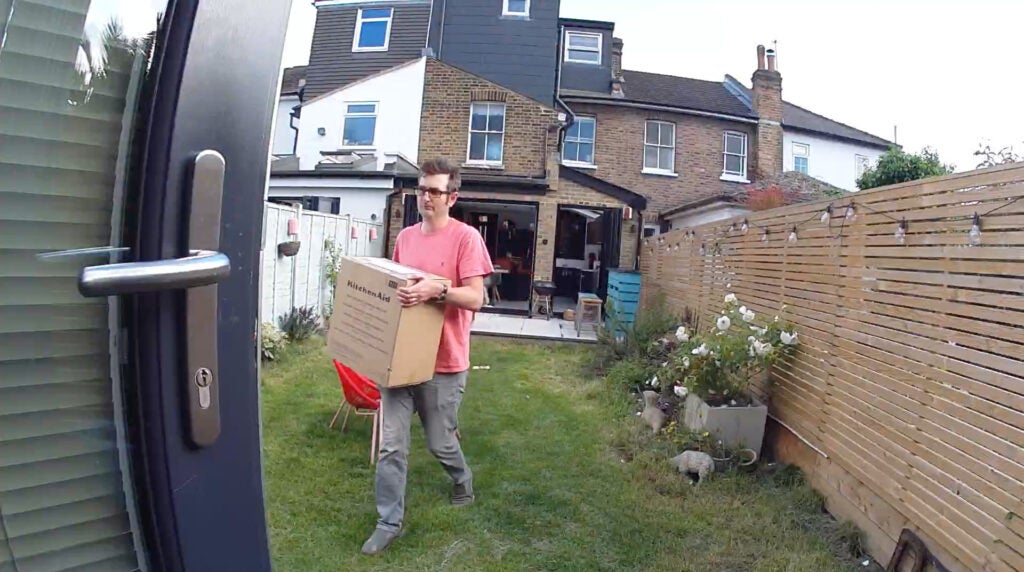
At night, the Go 2 can turn on its spotlight and shoot in full colour. It works well for people close-up, but in the back of the frame, the video quality can be found wanting. As you can see from the shot below, you can’t clearly see me because of the backlighting coming from the kitchen.
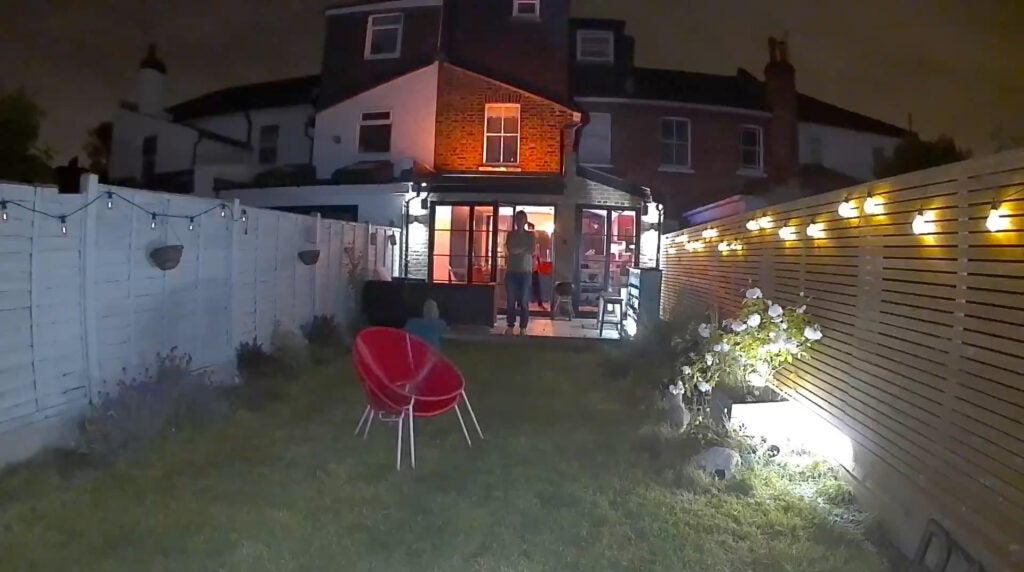
Latest deals
Should you buy it?
If you need a camera that will work anywhere, then this unit’s built-in 4G connection will deliver coverage almost anywhere.
If you mostly need security cameras for you home, then this model is expensive given it’s only a 1080p model. You can buy higher-resolution cameras for less.
Final Thoughts
The first question you have to ask is, do you need dedicated 4G backup for your camera? If the answer is yes – say, for a boat, motorhome or rural area – then this is the best camera of its type. It’s well featured, easy to use and can connect to Wi-Fi when required.
However, for those looking for a security camera for their home, this model isn’t great value. For similar money, the Arlo Pro 4 offers better image quality. And those who need extra reliability would do well to look for a model with broadband connection that offers 4G backup, such as BT Hybrid Connect. Check out my guide to the best outdoor security cameras for alternatives.
How we test
Unlike other sites, we test every security camera we review thoroughly over an extended period of time. We use industry standard tests to compare features properly. We’ll always tell you what we find. We never, ever, accept money to review a product.
Find out more about how we test in our ethics policy.
FAQs
Battery life will depend on how often the camera is triggered and the mode it’s in; but you can expect two to three months from a single charge.
Yes, you can. Each Wi-Fi (or cellular) camera, or base station, can have its own location programmed in for the purposes of geolocation.
UK RRP
Manufacturer
Size (Dimensions)
Weight
ASIN
Release Date
First Reviewed Date
Model Number
Resolution
Voice Assistant
Battery Length
Smart assistants
App Control
IFTTT
Camera Type
Mounting option
View Field
Recording option
Two-way audio
Night vision
Light
Motion detection
Activity zones
Object detection
Audio detection
Power source
An improvement over the original, the Arlo Go 2 works over Wi-Fi or 4G, seamlessly swapping between the two. Its Full HD resolution is an upgrade over the original, although lower than most of the Arlo range. This model is expensive, but if you need security camera coverage where there’s no Wi-Fi, then this is the best option. Most people will find the Arlo Pro 4 a better choice.
Pros
- Wi-Fi and cellular
- Excellent mode control
- SD card backup
- Powerful activity zones and AI detection
Cons
- Expensive
- Can’t view SD card remotely
Introduction
Thanks to its SIM card slot, the Arlo Go camera was able to record and operate in areas that other security cameras couldn’t, but it had one issue: it was a cellular-only product, and therefore it wasn’t particularly flexible. The Arlo Go 2 aims to fix that, with the option of Wi-Fi and cellular connections, seamlessly able to switch between the two. This makes it a great option in those instances where flexibility is required. It’s a little expensive and quite a niche product – but if you need an adaptable bit of kit, there’s nothing better.
Design and Installation
- SIM and microSD card slots
- Screw-mount only
- Connects to 4G networks and Wi-Fi
For the Arlo Go 2, the company has opted for a design that looks and feels much like other cameras in the range, such as the Arlo Pro 4. It’s a touch longer than most models, bar the Arlo Floodlight, since it holds a larger battery in the back. Interestingly, Arlo has rolled out this larger case for the longer battery-life editions of the Pro 4 and Ultra 2: the Pro 4 XL and Ultra 2 XL.
Due to the size of the Go 2, there’s no option for a magnetic mount. Instead, you get a screw mount to which you can attach the provided wall/ceiling mount.

The camera can be charged using the standard magnetic connector located on the bottom of the unit, which is also used for ****ATTACHING???***solar panels, and there’s also a button beneath that, when pressed, allows you to slide out the camera and battery for charging.

If you already have a dedicated Arlo battery charger, then you can use this to top up the battery, switching it out for an already-charged unit. This trick ***WHAT TRICK? DO YOU MEAN THE REMOVAL OF THE BATTERY AND CAMERA???*** also provides access to two slots inside the camera: the microSD card slot for offline video backups, and the SIM card slot for connection to a cellular network.

Not that this camera requires a cellular connection; it can connect to a standard Wi-Fi network instead. By default, the Wi-Fi network is the preference, with cellular taking over in those instances there isn’t a wireless connection.
That’s useful for watching over items such as a motorhome, for example: when it’s parked at home, the camera will use Wi-Fi; when you take it out, the camera protects using its cellular connection.

The connection to the Arlo app is simple. Just by following the wizard, I had my camera up and connected within 10 minutes.
Features
- Offline backups can’t be accessed remotely
- Excellent detection options
- Clever mode options
Once connected to the Arlo app, the Arlo Go 2 looks, acts and operates just like any other camera from the range. Tap the thumbnail image to dive into the Live view, where you can turn on two-way talk to have a conversation with anyone you can see. There’s also a siren you can activate: I found this loud enough to attract attention, but not as loud as a home alarm.

To get the camera to do more than simply warn you of motion, it’s worth having an Arlo Secure subscription. Prices start at £2.99 for a single camera with 30 days of activity history in the cloud; if you want infinite cameras covered, it’s £8.99 a month. That’s a little more expensive than the similar packages for Ring and Nest.
These plans top out at a recording resolution of 2K, which is fine for the Arlo Go 2. If you have a 4K camera, then you’ll need Arlo Secure Plus, which offers a multi-camera plan for a whopping £12.99 a month.
Arlo Secure is about more than just cloud storage, however; it also delivers additional features. Activity Zones are a key feature, letting you select which parts of the image you want to monitor for motion. My only word of warning is that if you move the Arlo Go 2, you’ll need to remember to redraw the Activity Zones for the new location.

Arlo Secure also introduces people, vehicle and animal detection, with the option to turn on notifications for your selection of detection type. Typically, I leave people and animal detection on (the latter, for my cats), but don’t bother with vehicle detection.
All video recorded to the cloud is available in the excellent Library section of the app. This highlights all video from all cameras, but it’s easy to filter by device, date and detection type (people, animals and vehicles) to quickly find the clip you want. Any clips can be downloaded to a phone.

Given that 4G connections may not be the most reliable, the Arlo Go 2 also offers the ability to record to a microSD card. This is welcome, and means that footage won’t be missed in those instances there’s no internet connection. However, there’s no way to remote view footage stored on an SD card. Instead, you have to retrieve the camera, open it up and insert the memory card into a computer.
The combination of the two is hugely powerful. Set up correctly, the Arlo Go 2 proved to be reliable and powerful, delivering only those notifications from the detection type I had stipulated.
What’s particularly impressive about Arlo cameras is their mode settings, which let you choose when they can and can’t record. Modes can be activated manually (on and off); but there are automatic options, too, including geofencing and scheduling, where you set the mode based on the time of day.

Again, be careful when using geofencing: if the Arlo Go 2 moves, you’ll need to reset its location in the app to the new area, or you may find some unexpected results.
Cleverly, geofencing can be used with scheduling. When you go out, the Arlo Go 2 turns on. When you return home, the camera reverts back to its schedule.
If that isn’t flexible enough, the camera’s main modes can be selected automatically using IFTTT – say, turning the camera on when your smart alarm (Boundary) turns on.
Video Quality
- 1080p resolution only
- Sharp in the day
- Full-colour night footage
Thanks to a 130-degree field of view, the Arlo Go 2 captures footage across a decent area inside or out. It’s a product of compromise, though. While Arlo’s more recent cameras offer a 2K resolution or higher, the Arlo Go 2 has a 1080p resolution.

Admittedly, this is a step up from the 720p resolution of the original. Nevertheless, this camera falls a little way behind much of the competition. That said, the lower resolution does mean that the camera is more likely to deliver footage over 4G without breaking up. I tested the camera in a variety of locations over both Wi-Fi and 4G, achieving the same quality of video in all areas.
During the day, the camera shoots decent video, even when pointing southwards into the sun. There’s a bit of pixellation as a result of the resolution, but people and faces are clear and easy to make out.

At night, the Go 2 can turn on its spotlight and shoot in full colour. It works well for people close-up, but in the back of the frame, the video quality can be found wanting. As you can see from the shot below, you can’t clearly see me because of the backlighting coming from the kitchen.

Latest deals
Should you buy it?
If you need a camera that will work anywhere, then this unit’s built-in 4G connection will deliver coverage almost anywhere.
If you mostly need security cameras for you home, then this model is expensive given it’s only a 1080p model. You can buy higher-resolution cameras for less.
Final Thoughts
The first question you have to ask is, do you need dedicated 4G backup for your camera? If the answer is yes – say, for a boat, motorhome or rural area – then this is the best camera of its type. It’s well featured, easy to use and can connect to Wi-Fi when required.
However, for those looking for a security camera for their home, this model isn’t great value. For similar money, the Arlo Pro 4 offers better image quality. And those who need extra reliability would do well to look for a model with broadband connection that offers 4G backup, such as BT Hybrid Connect. Check out my guide to the best outdoor security cameras for alternatives.
How we test
Unlike other sites, we test every security camera we review thoroughly over an extended period of time. We use industry standard tests to compare features properly. We’ll always tell you what we find. We never, ever, accept money to review a product.
Find out more about how we test in our ethics policy.
FAQs
Battery life will depend on how often the camera is triggered and the mode it’s in; but you can expect two to three months from a single charge.
Yes, you can. Each Wi-Fi (or cellular) camera, or base station, can have its own location programmed in for the purposes of geolocation.
UK RRP
Manufacturer
Size (Dimensions)
Weight
ASIN
Release Date
First Reviewed Date
Model Number
Resolution
Voice Assistant
Battery Length
Smart assistants
App Control
IFTTT
Camera Type
Mounting option
View Field
Recording option
Two-way audio
Night vision
Light
Motion detection
Activity zones
Object detection
Audio detection
Power source



















